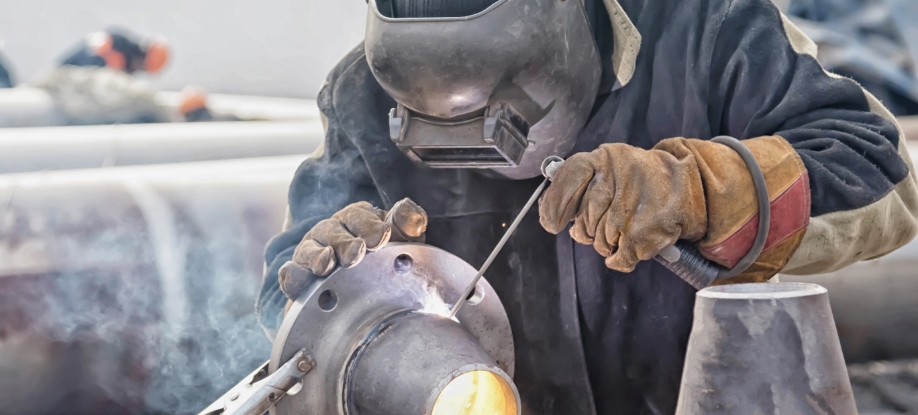How to Weld Stainless Steel Sheets Without Warping
Aug 31st 2023
When it comes to welding stainless steel, the task is not as easy to handle as it is with welding carbon steel. It’s a critical skill that welders can gain over time with plenty of practice and experience. However, one of the major challenges when welding stainless steel is the potential for warping during the welding process. Warping can compromise the integrity and aesthetics of the weld, leading to costly rework and delays.
There are effective techniques and essential tips available to help welders prevent warping and achieve successful stainless-steel welding. From proper preparation and material selection to controlling heat input and employing distortion control methods, welders can learn about the much-needed strategies to create strong, distortion-free welds in stainless steel.
Understand the Factors Contributing to Warping Stainless Steel
Before delving into the solutions, it's essential to understand the factors that contribute to warping in stainless steel welding. Warping occurs due to the non-uniform distribution of heat during the welding process. Stainless steel has low thermal conductivity, so localized heating can cause uneven expansion and contraction, leading to distortion. The type of welding process, welding parameters, type of welding wires, joint design, and material thickness also play crucial roles in warping. Being aware of these factors will help welders take proactive measures to minimize warping during stainless steel welding.
Solutions to Help Prevent Warping
Welding stainless steel can be a challenge, so there are certain precautions that need to be made to work against warping the material. By paying attention to welding parameters and joint design, welders can actively work to prevent/minimize warping in stainless steel welding, ensuring strong, distortion-free welds that meet the highest standards of quality and reliability.
Confirm Proper Preparation and Material Selection
The first step in preventing warping is thorough preparation. Clean the stainless steel surfaces to remove any contaminants that could affect the weld quality. Additionally, ensure that the selected stainless steel grade matches with the appropriate filler material. Using the correct filler material helps maintain the mechanical properties and corrosion resistance of the weld.
Control Heat Input
Controlling heat input is crucial for preventing warping in stainless steel welding. High heat input can lead to excessive expansion and contraction, increasing the risk of distortion. To control heat input, consider using pulsed welding techniques, lower amperage, and shorter welding cycles. Be mindful of the welding speed to ensure uniform heat distribution and minimize localized heating.

Employ Distortion Control Techniques
Distortion control techniques play a significant role in achieving distortion-free welds in stainless steel. Preheating the base metal can help reduce the temperature gradient between the weld and the surrounding metal, limiting distortion. Proper tack welding and fixture design ensure secure alignment and fit-up, minimizing stress on the weld during cooling. Using a back-stepping welding sequence can also help distribute heat more evenly, which can help reduce the likelihood of warping.
Minimize Welding Length
Minimizing the length of continuous welding can help prevent warping. Long continuous welds result in extended heating, increasing the risk of distortion. Instead, consider using intermittent or stitch welding techniques for longer welds. This approach allows the material to cool down partially between welds, reducing the overall heat input.
Use Proper Clamping and Fixturing
Proper clamping and fixturing are essential for holding the workpiece in place during welding in order to help prevent distortion. The fixtures should securely hold the components in the desired position, allowing for minimal movement during welding. Strategic placement of heat sinks can also aid in heat dissipation and reduce distortion.
Remember the Strategies for Stainless Steel Welding
Welding stainless steel without warping requires a comprehensive understanding of the material's properties and the implementation of distortion control strategies. By focusing on proper preparation, controlling heat input, and employing distortion control techniques, welders can achieve successful and distortion-free welds in stainless steel. Being mindful of material selection, welding parameters, and joint design further enhances the chances of achieving strong, reliable, and aesthetically pleasing welds. With attention to detail and continuous improvement, welders can master the art of welding stainless steel and confidently take on diverse projects in various industries.
NS ARC Satin Glide® Stainless-Steel Welding Wires
NS ARC carries a wide range of reliable and high-quality Satin Glide® stainless-steel welding wires, available in a variety of diameters, grades, and packaging options. These high-strength welding wires are engineered to provide unmatched durability and versatility, allowing welders to tackle difficult projects within the automotive, energy, construction, manufacturing, and transportation industries with greater ease and efficiency. These welding wires are particularly useful in industrial and heavy-duty applications that require resistance to corrosion, high temperatures, and oxidation as well as high levels of strength and durability.
Become a stainless steel welding pro by learning the techniques and tricks from our handy and detailed how-to guide!
Learn MoreDISCLAIMER: This information is descriptive in nature and not purely prescriptive. Refer to your own welding machine’s user manual for proper settings and consult a welding expert for support.


